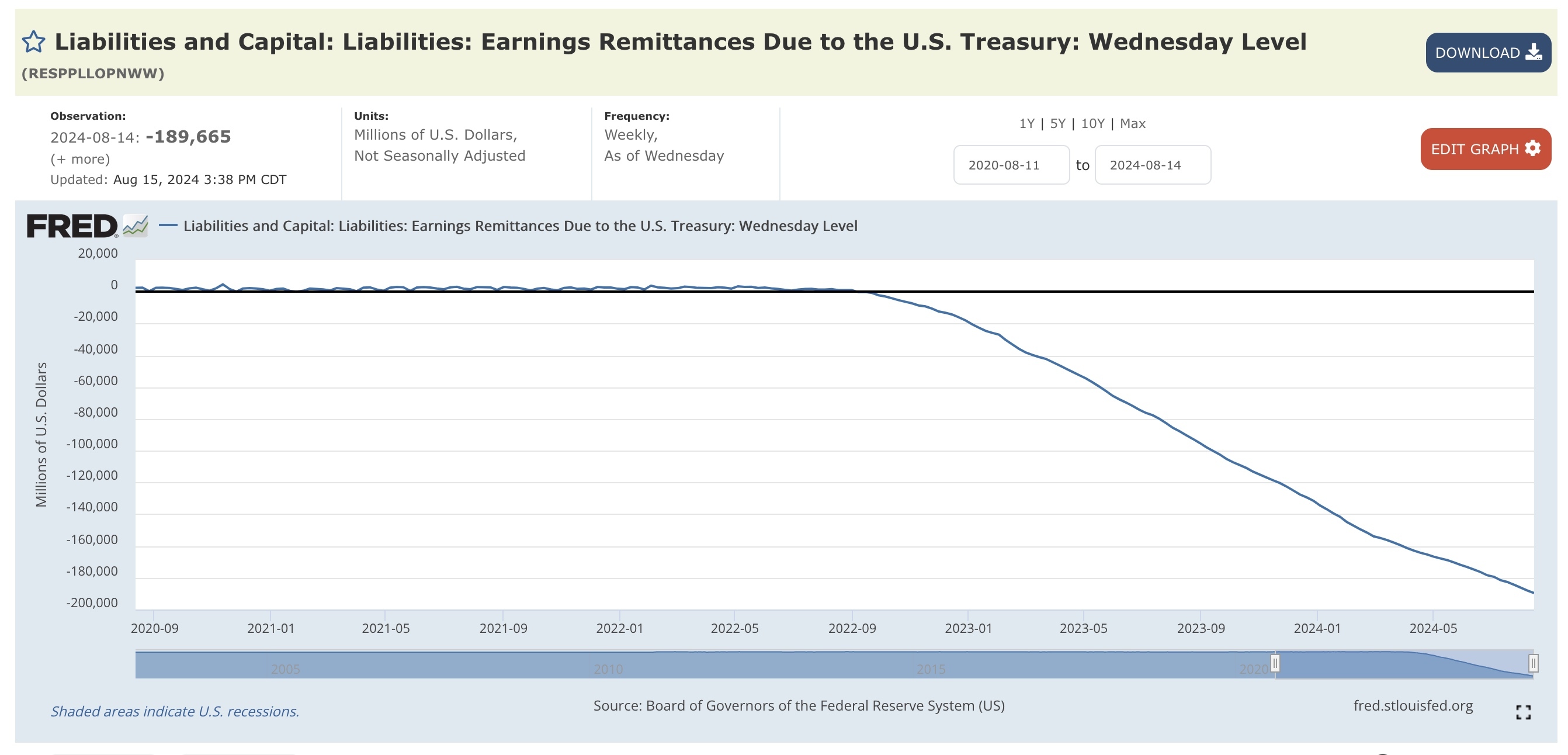cross-posted from: https://lemmygrad.ml/post/5429645
The Federal Reserve is implementing a 'soft landing' strategy that prioritizes big businesses and financial interests over the working majority, in contrast to 2008 when the market crashed and bailouts favored large corporations at the expense of taxpayers. The current approach involves protecting these interests upfront, ensuring their stability during this economic downturn.
Fed “losses” are banks “gains” in terms of revenues, that ultimately become net income and turn into capital. The fed bought up overpriced bonds from financial institutions like Goldman Sachs, which wasn't a significant issue when interest rates were under their control between 2008 and 2022. However, the loss of credibility on inflation led to rate hikes, causing accumulated losses.
The Fed chairman has stated that small businesses will suffer while big businesses remain strong due to their cash reserves. This strategy comes at a significant cost for average individuals who may face unemployment and potential loss of homes as they bear the brunt of the economic fallout.
Rate hikes and macro-management of money markets are designed to make borrowing expensive, protect big banks, and reduce demand by pushing small and mid-cap stocks into bankruptcy. This approach seems poised to result in further consolidation and monopolization of capital.
Show



A bit longer explanation of the graph. The US Treasury is effectively the owner of the Federal Reserve’s entire balance sheet. Any profit or loss resulting from the Fed’s monetary policy actions flows back to the Treasury.
For a long time, the Fed’s income from holding Treasury debt and fees from financial institutions outweighed its expenses (like interest paid on reserves and operational costs).
However, when the Fed raised interest rates on reserves from near 0% to around 5% in 2021-2022, its expenses surged. This was because the Fed had trillions of dollars in reserve liabilities after years of Quantitative Easing (QE) – buying Treasury bonds and Mortgage-Backed Securities (MBS) to stimulate the economy.
Reserves are liabilities with variable interest rates, so the Fed’s expenses rose immediately. Meanwhile, its assets (mainly Treasury securities and MBS) pay fixed interest, so their income didn’t increase.
Here’s the problem: the value of the Fed’s assets fell when it raised interest rates. This normally wouldn’t be a major issue, as the Fed could just hold those assets until maturity and receive their full value. However, the Fed has been shrinking its balance sheet via Quantitative Tightening (QT) - selling these securities back into the market at a loss.
The overall impact is that the non-government sector now has more claims on the government than before. Essentially, the government spent money into the economy, exchanged that spending for Treasury bonds, the Fed bought those bonds, and is now selling them back at a loss
The key takeaway is that the Fed’s decisions to raise interest rates and conduct QT have increased the government’s overall interest expenses. This leaves less room for non-inflationary public spending on vital areas like healthcare, education, infrastructure, and so on.
Another quibble, QT is when the Fed does not reinvest the principal of maturing assets. As far as I know, they are not selling any assets (unless they started selling MBS?). So they do not have to book the loss of value, but their expenses are now higher than their interest income
sure that's fair
So pretty much a doom spiral that can't end or else the market collapses as all the cocaine will run out?
pretty much yeah
This graph does not show all remittances. It shows the negative remittances that are held on the balance sheet as a liability, meaning that the Fed will pay back the government when they start making a profit again. Positive remittances are not held on balance sheet, they are paid to the Treasury immediately. The positive values in your graph is "capital", which is basically unrelated
This document shows Fed remittances over time, which have been substantial. See figure 2 https://www.stlouisfed.org/on-the-economy/2023/nov/fed-remittances-treasury-explaining-deferred-asset
When they start making a profit again is doing a lot of work here. It's not at all clear this will actually happen in the foreseeable future. In the mean time, the operating budget is tightened because of ever increasing share of debt payments.
The Fed controls when they make a profit again, since they set the federal funds rate. When they lower that rate below a level that is straightforward to calculate, they will make a profit. It is incredibly easy for the Fed to earn a (long-term) profit since they issue the currency and earn seigniorage
The ultimate purpose of the financial games the Fed plays is to protect the interests of large financial institutions. The only way that can be achieved within the context of the current system is by fucking over everyone else. That's what the Fed is doing right now.
I agree. I am mainly critiquing your graph. You are showing the losses, which are large and look scary. But you're not showing the context of how large the past profits have been.
And even in a world where the Fed is making profits by exchanging short duration for long, they are still providing a huge subsidy to the financial system. So it's not accurate to say these recent losses are a measure of the subsidy to financial institutions. It just feels like the dumb RRP graphs you see on superstonk
yeah that makes sense